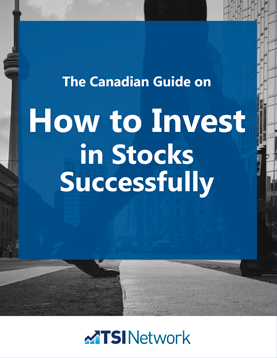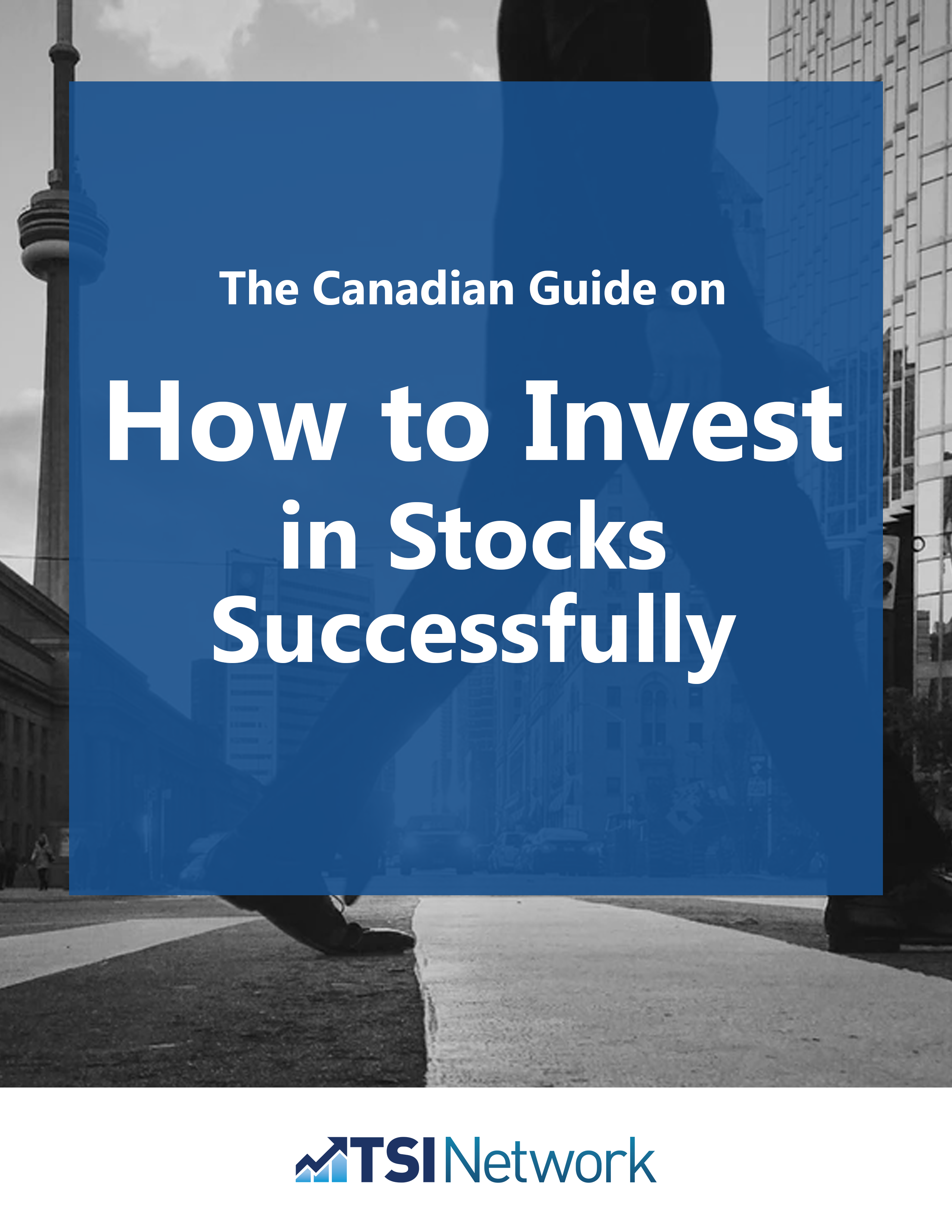Topic: How To Invest
TSI Pat McKeough’s Inner Circle Q & A for March 21, 2017
Dear Inner Circle Member,
If you take a university-level psychology or medical course, you run the risk of “medical student’s disease”. This happens when you read about disease symptoms, and get a sudden fear that they describe something you already suffer from.
A good teacher will tell you that many symptoms in your textbook are exaggerations of normal, everyday fluctuations in your health and vitality. As numerous websites explain, a headache can signal anything from a cold to a brain tumour. To make a sound diagnosis, you need to take a wider, deeper view.
Something like this also happens in many investing careers. Early on, you may learn a few things about investing, and form some opinions. But your investing education really begins after you start to recognize just how much you don’t know. When you reach that point, you’ll start to look at a much wider range of data and indicators. But, more important, you’ll start to pay more attention to investment selection and portfolio structure, and far less to deciding when to buy and sell.
Until you begin that process, you run a big risk of zeroing in on a narrow selection of data that’s irrelevant in the current market, or putting your faith in a single indicator that at best works intermittently.
You can always get lucky, of course. You may zero on the one omen that is most telling for that point in time. But you are more likely to choose an indicator or narrow slice of data that will lead you to miss out on a low-risk opportunity, or lose money. That’s due to simple arithmetic. There are many indicators to choose from, along with a variety of ways to interpret them. At any given time, only a minority of the many combinations will lead to profit-making decisions. The same idea applies to the way you sample the data.
Last year, for instance, many investors dwelt on the risks they detected in their analysis of p/e ratios (the ratio of stock prices to per-share earnings). Some felt this analysis showed it was unwise to buy stocks, or even hang on to stocks they owned. They felt it was safer and smarter to wait for stocks to come down to more attractive levels.
In contrast, many successful investors looked at a wider variety of information, and came to more optimistic conclusions.
The successful investors knew that the U.S. economy had gone through seven years of weak economic growth, but was unlikely to stay depressed forever. They recognized that weak resource prices were holding down growth in the Canadian economy, but that the resources sector is volatile and apt to rebound eventually. Meanwhile, in both countries, dividend yields on stocks of well-established companies were higher than interest yields on bonds.
A year ago, the Toronto exchange S&P/TSX composite index was around 13,500. Now it’s 15,500. The Dow Jones Industrial Average was around 17,000. Now it’s 21,000. Things don’t always work out that well for successful investors, of course. But, as the saying goes, that’s the way to bet. To succeed as an investor, you have to be able to make some money when times are good, and avoid losing too much at other times.
Early in their investment careers, many investors pick up on the idea that the best way to control stock-market risk is to figure out which way stock prices are headed next, then invest accordingly. This, though, turns out to be much harder than it sounds. It’s easier— and more profitable—to focus on investment quality and diversification.
You’ll do even better if you follow our three-part Successful Investor strategy: invest mainly in well-established, dividend-paying companies; spread your money out across the five main economic sectors; downplay or avoid stocks in the broker/media limelight.
Here’s a simple refinement you can add to our three-part strategy. It will improve your results all the more. Buy stocks regularly during your working years, regardless of the market outlook. Sell stocks gradually in retirement, when you need money to supplement your income from dividends and other sources.
I’ve said all this to lots of investors over the years. You’d be surprised how many replied, to their eventual regret, “That’s a good idea, but it’s too late to apply it now. The market has already gone up too much (or down so much that it scares me). Maybe I’ll give it a try after the next market downturn.”
Pat
Q: Pat: Can I have some info on BSM Technology (GPS)? Thanks.
A: BSM Technologies Inc., $1.47, symbol GPS on Toronto (Shares outstanding: Shares outstanding: 82.6 million; Market cap: $123.9 million, www.bsmwireless.com) makes equipment and software that helps owners of truck, train and other fleets monitor their vehicles using global positioning systems (GPS).
Customers typically purchase the hardware upfront, and then enter into a long-term contract for software updates and monitoring services. Recurring revenue from those service contracts provide two-thirds of BSM’s total revenue.
The U.S. accounts for 68% of its sales, followed by Canada (30%) and other countries (2%).
BSM’s revenue jumped 327.2%, from $13.8 million in 2012 to $59.0 million in 2016 (fiscal year end September 30).
That gain is mainly because the company acquired Webtech Wireless for $49.9 million in cash and stock on September 30, 2015. Webtech makes software that compiles and analyzes GPS data. The transaction nearly doubled BSM’s annual revenue.
As a result of the merger, the company’s shareholders wound up with 51% of the company; Webtech investors own the remaining 49%.
Due to various writedowns, BSM’s earnings were more erratic, rising from $0.05 a share (or a total of $1.5 million) in 2012 to $0.29 a share (or $9.5 million) in 2013. Earnings then plunged to $0.01 a share (or $330,000) in 2014, and to nil per share (or $20,000) in 2015. Due to the Webtech purchase, earnings jumped to $0.09 a share (or $7.6 million) in 2016.
In October 2016, BSM bought Mobi Corp. for $8.0 million U.S. in cash plus potential future payments based on profits. Those payments could rise as high as $17 million U.S. Mobi is a privately held software provider offering products that use GPS data and analytics to let its customers better manage operational activities such as planning, scheduling, routing and dispatch.
BSM’s revenue in its fiscal 2017 first quarter, ended December 31, 2016, rose 17.0%, to $18.4 million from $15.7 million a year earlier. The gain was a result of an increase in subscribers thanks to the Mobi acquisition. Sales of the company’s GPS devices also rose.
BSM lost $465,000 in the quarter, down from $505,000 a year earlier. At $0.006, losses per share were unchanged. Cash flow was $0.03 a share in the latest quarter, up from $0.015.
Research costs rose 28.0%, to $3.0 million (or a high 16.4% of revenue) from $2.4 million (15.0%) a year earlier.
The company holds cash of $16.5 million, or $0.20 a share. Its long-term debt of $8.0 million is a low 6.5% of its market cap.
BSM earnings will likely jump from $0.03 per share in fiscal 2017 to $0.06 per share in fiscal 2018. The stock trades at 28.2 times the 2018 forecast.
The company has some speculative appeal. Demand for GPS monitoring services is growing fast as the technology helps businesses cut their costs. Moreover, many of BSM’s clients are reluctant to switch providers due to the difficulty of transferring their data to a new platform. That should allow the company to hold on to its current customers while adding new ones. BSM’s clients now include six of the seven North American class I railroads (such as CN Rail, CP Rail and Norfolk Southern) and dozens of class II and class III railroads.
The company’s growing customer base and small size enhances its appeal as a takeover target. However, investors should treat that as a bonus, and not the sole reason to invest.
BSM Technologies is okay to hold for aggressive investors.
Q: Hello: This is my first inquiry since joining the Inner Circle. What is your advice on Stella-Jones? Thanks and regards.
A: Stella-Jones Inc., $38.24, symbol SJ on Toronto (Shares outstanding: 69.2 million; Market cap: $2.7 billion; www.stella-jones.com), makes pressure-treated wood products. They include: railway ties (36% of sales); utility poles (32%); treated lumber products for the residential market (21%); lumber for industrial uses such as construction timbers and highway guardrails (5%); and logs and lumber (6%).
The company gets most of its utility poles from the timberlands it leases in Quebec and B.C. It also buys wood for railway ties and other products from sawmills in the U.S. and Canada. The U.S. provides 69% of its sales, while Canada supplies the remaining 31%.
Revenue jumped 139.3%, from $651.6 million in 2011 to $1.6 billion in 2015.
The company’s earnings rose 153.9%, from $55.7 million in 2011 to $141.4 million in 2015. Due to more shares outstanding, earnings per share gained 134.5%, from $0.87 to $2.04 (all per-share amounts adjusted for a 4-for-1 stock split in October 2013).
Stella-Jones’s sales in the three months ended December 31, 2016, fell 4.4%, to $341.7 million from $357.2 million a year earlier. The decline was due to lower railway tie demand.
That lower demand offset revenue increases due to positive currency gains and acquisitions. This included Stella-Jones’ $44.9-million purchase of Ram Forest Group Inc. and Ramfor Lumber Inc. in October 2015.
On June 3, 2016, the company also completed its acquisition of Lufkin Creosoting Co., Inc. for $37.5 million U.S. and Kisatchie Treating LLC for $42.5 million U.S.
Earnings fell 43.9% in the latest quarter, to $18.5 million, or $0.27 a share, from $33.0 million, or $0.48 a share. The decrease was largely due to the lower sales.
Stella-Jones’ balance sheet remains sound. The company’s long-term debt of $687.5 million is a moderate 23.7% of its market cap.
Stella-Jones’s growth-by-acquisition strategy adds risk. However, despite weaker demand for railway ties and utility pole, the company remains an established leader in those niche markets. It also stands to gain from infrastructure projects as North American power companies upgrade their transmission and distribution grids.
Stella-Jones shares trade at 17.3 times the company’s forecast 2017 earnings of $2.21 a share. The $0.40 dividend yields 1.2%.
Stella-Jones is okay to hold, but only for aggressive investors.
Q: Hi Pat: May I have your opinion on Evertz Technologies (ET)? Thanks.
A: Evertz Technologies Ltd., $16.72, symbol ET on Toronto (Shares outstanding: 75.6 million; Market cap: $1.3 billion; www.evertz.com), makes video and audio systems for telecommunications and other media industries.
The company sells its hardware and software to content creators, broadcasters, specialty channels and TV service providers. Customers use them to support complex digital and high definition television (HDTV) networks as well as high-bandwidth Internet services.
Customers have used Evertz’s hardware at events such as the Sochi Olympics in Russia, the FIFA World Cup, the Commonwealth Games and the U.S. midterm elections.
The company’s products aim to improve the efficiency of its clients signal routing, distribution, monitoring and content management. They also help businesses automate manual processes, which reduces their costs.
Evertz’s revenue rose 30.0%, from $293.4 million in 2012 to $381.6 million in 2016 (fiscal years end April 30). The company’s earnings rose from $0.81 a share (or a total of $60.0 million) in 2012 to $0.88 (or $65.2 million) in 2013. Earnings fell to $0.85 a share (or $63.5 million) in 2014, partly due to higher research costs. Earnings then recovered to $0.87 a share (or $66.4 million) in 2015, and reached $0.94 a share (or $70.9 million) in 2016.
In the three months ended January 31, 2017, Evertz’s overall revenue declined 8.7%, to $91.1 million from $99.8 million a year earlier. Its revenue from Canada and the U.S. increased 6.0% during the quarter to $56.8 million (62% of total revenue). The company’s revenue from other countries (38%) declined 25.7% to $34.3 million.
In the quarter, earnings per share fell sharply, to $0.13 from $0.33, on higher research spending as well as foreign-exchange losses due to the sharp rise in the U.S. dollar.
On January 31, 2017, the company held cash of $64.1 million, or $0.85 a share. It had almost no debt. Evertz also spends a high 19% of its sales on research.
The stock trades at 15.8 times the $1.06 a share the company is likely to earn for all of fiscal 2017. The shares yield 4.3%. In December 2016, Evertz paid a special dividend of $1.10 per share.
The company’s leading position in its niche market and its high research spending add to its appeal. However, its success could prompt much larger makers of electronic equipment to enter the market.
Evertz Technologies is okay to hold, but only for aggressive investors.
Q: Pat: I have been an Inner Circle member for many years. Thanks for your wise investment advice. Wondering what your thoughts might be on DexCom? Thanks.
A: DexCom, $77.38 symbol DXCM on Nasdaq (Shares outstanding: 84.8 million; Market cap: $6.8 billion; www.dexcom.com), develops, makes and sells continuous glucose monitoring (CGM) systems for people with diabetes. These are small wearable devices that track a person’s glucose throughout the day and night, notifying them of highs and lows so they can take action.
The company’s Seven and Seven Plus CGM systems have FDA approval and are used for outpatient monitoring. DexCom also has a collaborative agreement with Edwards Lifesciences to develop a CGM product for use in hospitals. The company currently makes its devices at DexCom headquarters in San Diego, California.
In the three months ended December 31, 2016, revenue rose 30.9%, to $171.2 million from $130.8 million a year earlier. The company lost $7.4 million, or $0.09 a share, compared to a profit of $1.5 million, or $0.02. The sales jump was not enough to offset much higher spending on research and development, product launches, and increased staff.
The total number of patients using DexCom’s glucose monitoring products rose to about 200,000 by the end of 2016 from just under 140,000 a year ago.
The company expects to add about 70,000 new patients this year, with the launch of its G5 Mobile CGM. The G5 Mobile CGM transmits glucose data directly to the user’s smartphone, allowing for real-time monitoring and improved treatment decisions. Also, the U.S. Centers for Medicare and Medicaid Services (CMS) ruled that DexCom’s G5 Mobile system is therapeutic and will be covered under Medicare. That should increase revenue for 2017.
While DexCom’s CGM systems have the advantage of being the first to market and a growing customer base, the company faces strong competition in the U.S. and internationally from big medical device rivals. They include Medtronic and Abbott Laboratories—both of which have more-established relationships with diabetic patients and their doctors. Competing CGM products from these competitors will hurt DexCom’s sales and earnings growth.
We don’t recommend shares of DexCom.



